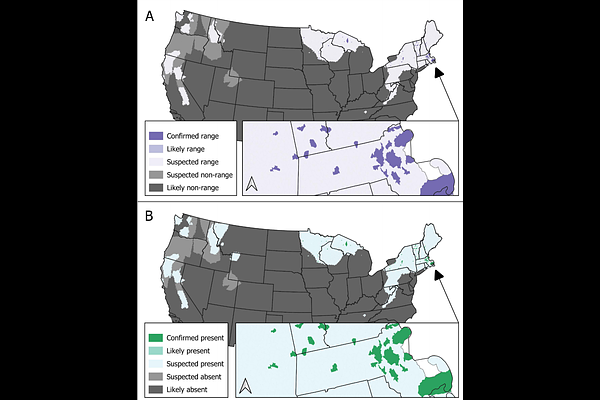A Framework for Transparent and Repeatable Species Range Maps

A Framework for Transparent and Repeatable Species Range Maps
Tarr, N. M.
AbstractKnowledge of species' geographic distributions is essential to wildlife conservation and management. A great deal of research has developed predictive models that reveal complex spatial patterns and temporal dynamics of species' occurrence probabilities. However, binary maps of the geographic limits of species occurrence ("range maps") are still used in conservation assessments, decision making, and as a component of the species distribution modelling process itself. Organizations that create and revise range maps face numerous challenges. For example, different types of data must often be combined to fill knowledge gaps. Range delineation is labor intensive and subjective in ways that hinder transparency and repeatability. I developed a framework for transparent and repeatable range maps in support of the U.S. Geological Survey's National Gap Analysis Project. The framework has an explicit conceptual foundation that supports a compilation process built with open-source technologies and freely available data. As a case study, I mapped Fisher Pekania pennanti range and presence between 2021 and 2025 for the conterminous United States by compiling information from a range map circa 2001, 2,287 species occurrence records from 16 datasets, and 17 scientific publications. The maps depict presence and range according to levels of evidence. The justification for classification of each spatial unit is included in the output. The maps revealed that translocations and emigration have expanded the species' range in some areas, but the species is suspected to be absent from some areas previously considered range. The framework overcomes several challenges, but some components of the process warrant further development, such as occurrence record evaluation and direct incorporation of predictions from species distribution models. This work demonstrates how freely accessible technologies and data can support the maintenance and revision of species range datasets while improving transparency, reproducibility, and efficiency.